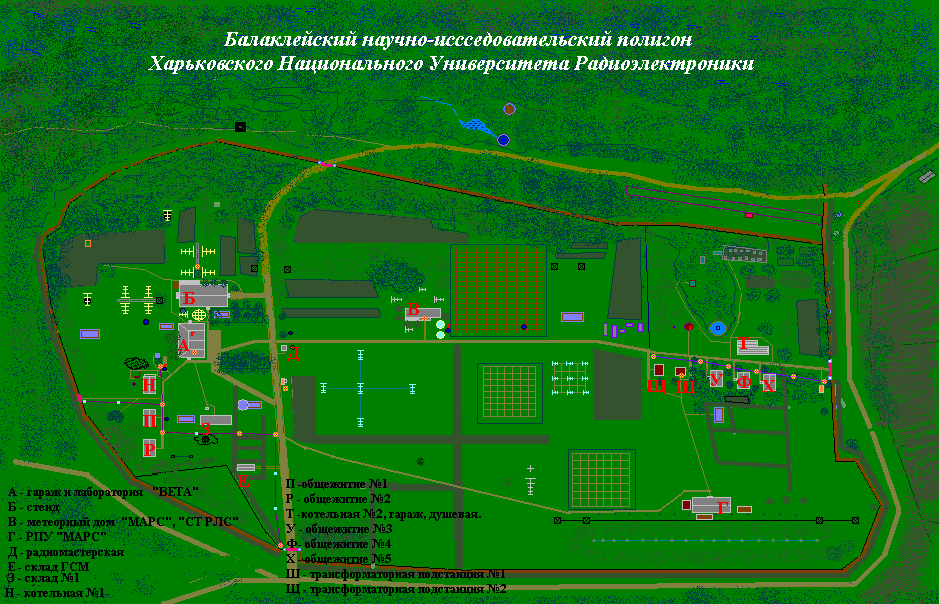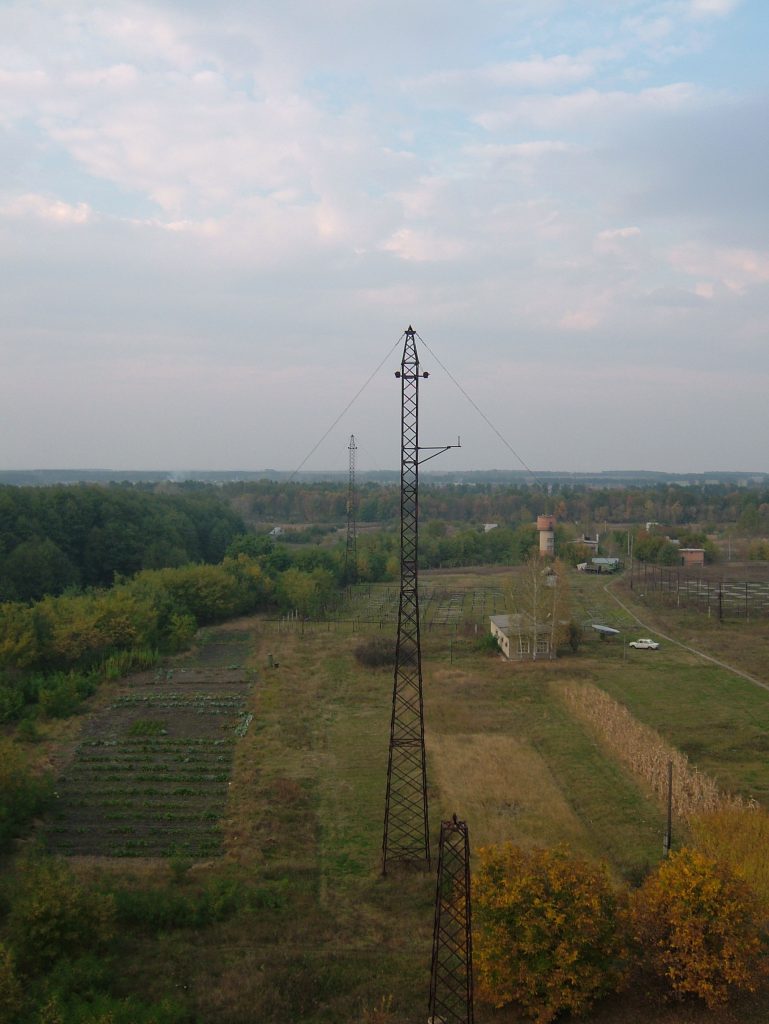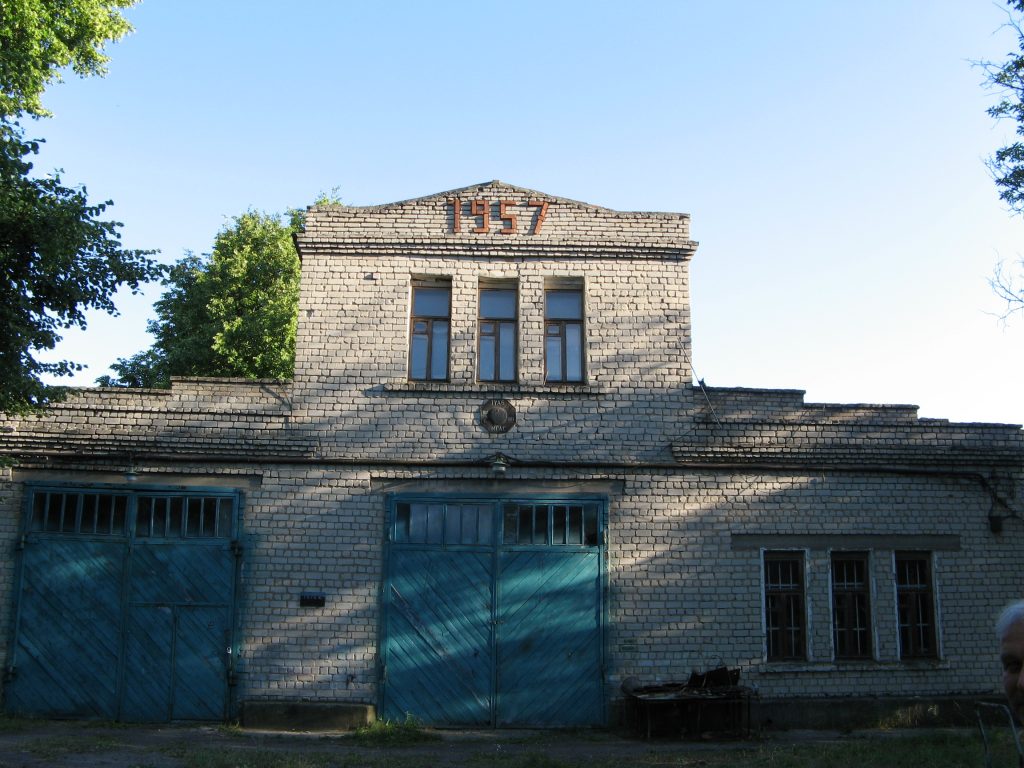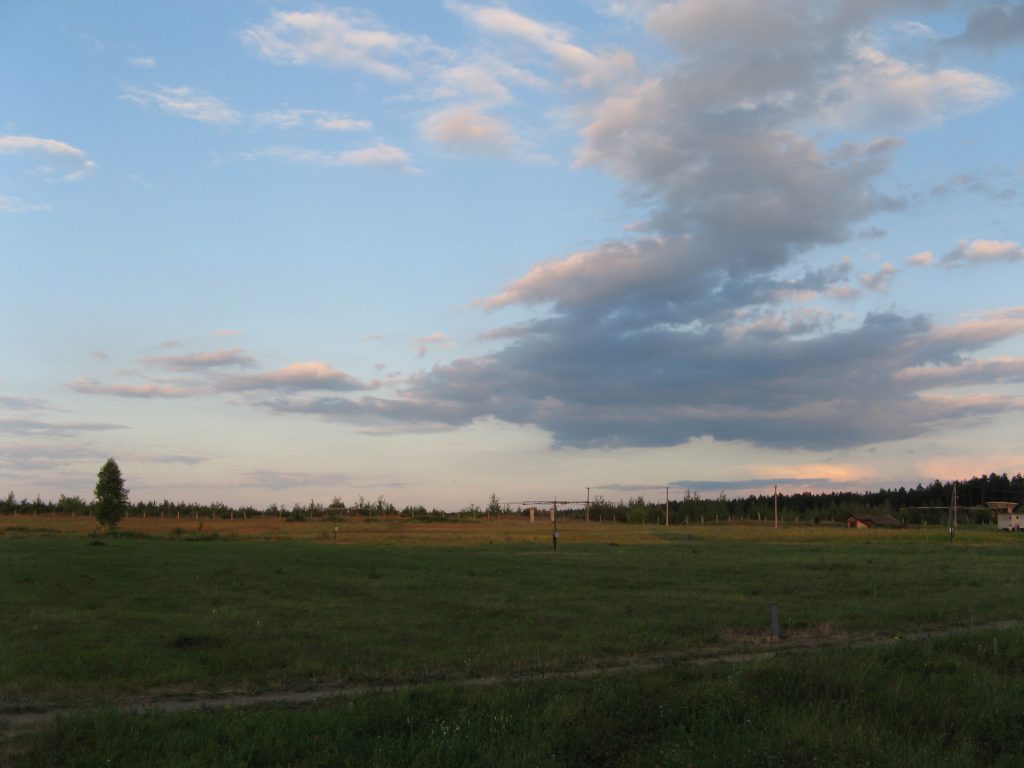The Multipurpose Geophysical Complex for Atmospheric Research of the Kharkiv National University of Radio Electronics (Vilkhuvatka village, Balakliya district, Kharkiv region) has the status of the National Scientific Asset of Ukraine (Order of the Cabinet of Ministers of Ukraine of 11 February 2004, No. 73-r).
The complex is located ~100 km from Kharkiv and covers an area of 14 hectares. There is an autonomous power supply (10 kV), drinking water, heated living quarters, a garage, and round-the-clock security.
In 2025, the Ukrainian state improved its approaches to financing unique scientific facilities that have national heritage status and are managed by the Ministry of Education and Science. The Order of the Ministry of Education and Science of Ukraine No. 673 of 2 May 2025 approved updated amounts of financial support for scientific facilities of national importance. The Multipurpose Geophysical Complex’s total funding for 2025 increased by almost 30%.
Equipment
- The Meteor Automatic Radar System is an ultra-sensitive radar system. The antenna system consists of 5 “wave channel” antennas arranged in the form of a cross, which allows for phase measurements. The operating frequency is 31.1 MHz.
- Stratospheric-tropospheric radar is a metre-range radar for measuring the movement of air masses in the lower atmosphere at altitudes of 2-15 km.
- РVertical profiling radar station – a wind speed and atmospheric turbulence meter using radar in the decimetre range.
- METKA is a system for synchronising time standards over long distances (up to 2000 km) with an accuracy of 20 ns using radio meteors.
- Wind machine – a complex designed to study the movement of air flows in the Earth’s atmosphere at altitudes of 80…105 km by radar measurements of the radial drift velocities of meteor trails in the operating state. The antenna system consists of two waveguide antennas with an operating frequency of 36.9 MHz.
- Receiving complex for recording radio signals reflected by space debris.
- SDR – Software-defined radio – a software-controlled digital broadband receiver for scientific and educational purposes.
Research
- Meteor observations.
- Location of correction stations of global navigation satellite systems.
- Atmospheric sounding to optimise air traffic in the region.
- Measurement and adjustment of antenna radiation patterns.
- Experiments on radio-acoustic sensing of the atmosphere.
- Works on hydrogen energy.
- Geophysical research.
- The use of meteor radars for probing the near-solar space.
- Placement of objects of a given size and contrast for calibration of satellite equipment intended for space photography.
- Experimental studies of the electromagnetic compatibility of various electronic equipment, including that installed on UAVs.
- Conducting regular studies of millimetre-wave radio wave attenuation using a radiometric complex.
- Implementation of the state budget fundamental work “Development of the theory and technology of passive and active information and measurement radio engineering systems for communication, frequency and time synchronization and atmospheric monitoring”.
- Work on drones detection by radar, acoustic and visual methods.
Use in the educational process
Internships for students in the programmes – Electronics, Electronic Communications, Instrumentation and Radio Engineering, Information and Measurement Technologies, Aviation and Rocket and Space Engineering.
Publications
- Afanasiev, Y., & Tymochko, O. (2022). Synthesis Method for Sensor Systems and UAVs in the Problem of Monitoring Lightning. 2022 IEEE 9th International Conference on Problems of Infocommunications Science and Technology, PIC S and T 2022 – Proceedings, 315–319. https://doi.org/10.1109/
PICST57299.2022.10238485 - Alieksieiev, V., Gretskih, D., Luchaninov, A., Lykhograi, V., & Shcherbina, A. (2021). Applying the electrodynamic approach to modeling wireless power transmission systems. Proceedings of International Seminar/Workshop on Direct and Inverse Problems of Electromagnetic and Acoustic Wave Theory, DIPED, 2021-Septe, 111–115. https:
- Afanasiev, V., Fustii, V., Kompaniiets, O., Maksymov, M., Afan//doi.org/10.1109/
DIPED53165.2021.9552254 - Guo, Q., Tian, Y., Qi, L., Wang, Y., Li, D., & Kaliuzhnyi, M. (2024). A SAR Multiple RFI Suppression Method via Frobenius Norm and Iterative Matrix Decomposition. IEEE Journal of Selected Topics in Applied Earth Observations and Remote Sensing, 17, 3927–3939. https://doi.org/10.1109/
JSTARS.2024.3357131 - Kartashov, V., Kolisnyk, V., Tykhonov, V., Pososhenko, V., & Kolisnyk, K. (2022). Improvement of the Acoustic Method for Detection of Unmanned Aerial Vehicles. 2022 IEEE 9th International Conference on Problems of Infocommunications Science and Technology, PIC S and T 2022 – Proceedings, 587–591. https://doi.org/10.1109/
PICST57299.2022.10238533 - Kartashov, V., Pososhenko, V., Kolisnyk, K., Oleinikov, V., Seleznov, I., & Kolisnyk, V. (2024). Determination of Spatial 3-D Distribution of Unmanned Aerial Vehicles Acoustic Radiation. Proceedings – IEEE International Conference on Electronics and Nanotechnology, ELNANO, 478–481. https://doi.org/10.1109/
ELNANO63394.2024.10756933 - Khudov, H., Makoveichuk, O., Butko, I., Murzin, M., Zvonko, A., Adamenko, A., Bashynskyi, D., Salnyk, O., Nyshchuk, A., & Khudov, V. (2024). DETERMINING THE NUMBER OF SMALL-SIZED RADARS IN A NETWORK WITH COHERENT SIGNAL PROCESSING FOR THE DETECTION OF STEALTH AERIAL VEHICLES. Eastern-European Journal of Enterprise Technologies, 3(9(129)), 37–45. https://doi.org/10.15587/1729-
4061.2024.306520 - Khudov, H., Makoveichuk, O., Khudov, V., Maliuha, V., Andriienko, A., Tertyshnik, Y., Pashchenko, V., Parashchuk, D., Khizhnyak, I., & Kalimulin, T. (2022). DEVISING A METHOD FOR SEGMENTING IMAGES ACQUIRED FROM SPACE OPTICAL AND ELECTRONIC OBSERVATION SYSTEMS BASED ON THE SINECOSINE ALGORITHM. Eastern-European Journal of Enterprise Technologies, 5(9–119), 17–24. https://doi.org/10.15587/1729-
4061.2022.265775 - Khudov, H., Ruban, I., Pievtsov, H., Makoveichuk, O., Popkov, O., Shabanov, D., Baranov, Y., Solomonenko, Y., Kryvosheiev, V., & Khudov, R. (2021). The Method for Identification of Radars Measurements of Nearby Objects Tracking. International Journal of Emerging Technology and Advanced Engineering, 11(12), 104–111. https://doi.org/10.46338/
ijetae1221_12 - Kolomiyets, S., & Kundyukov, S. (2023). On the question of constructing the distribution of the flux density of meteoroids over the celestial sphere in ground-based single-position radar measurements of meteor activity and velocity: The experience of past years. Advances in Space Research, 72(2), 623–637. https://doi.org/10.1016/j.asr.
2023.03.020 - Obod, I., Svyd, I., Vorgul, O., Maltsev, O., Datsenko, O., & Boiko, N. (2021). Optimization of Data Processing Structure for Multi-Position Radar Surveillance Systems. 2021 IEEE 3rd Ukraine Conference on Electrical and Computer Engineering, UKRCON 2021 – Proceedings, 133–137. https://doi.org/10.1109/
UKRCON53503.2021.9575286 - Semenets, V. V., & Leonidov, V. I. (2017). Coordinate method for estimation of radial velocity in systems of acoustic sounding of the atmosphere. Telecommunications and Radio Engineering, 76(3), 245–251. https://doi.org/10.1615/
TelecomRadEng.v76.i3.50 - Shostko, I., Tevyashev, A., Zemlyaniy, O., & Tsibulnikov, D. (2023). DESIGNING AND TESTING A PROTOTYPE OF OPTICAL-ELECTRONIC STATION FOR DETECTING AND TRACKING MOVING OBJECTS IN THE AIR. Eastern-European Journal of Enterprise Technologies, 6(5(126)), 36–42. https://doi.org/10.15587/1729-
4061.2023.295101 - Starokozhev, S., Shevtsov, I., Datsenko, O., Chumak, V., Sierikov, A., & Boiko, N. (2022). Comparative Analysis of Methods for Processing Data Transmission Information Codes by Secondary Radar Channels. 2022 IEEE 9th International Conference on Problems of Infocommunications Science and Technology, PIC S and T 2022 – Proceedings, 450–454. https://doi.org/10.1109/
PICST57299.2022.10238651 - Stove, A. G., Lukin, K. A., & Orlenko, V. M. (2022). Analysis of Partially Deterministic Waveforms in Noise Radar Applications. Proceedings International Radar Symposium, 2022-Septe, 159–163.
- Svyd, I., Obod, I., Maltsev, O., Andrusevich, V., Bakumenko, B., & Vorgul, O. (2021). Optimal Measurement of Signal Data Parameters of Requesting Radar Systems. 2021 IEEE 3rd Ukraine Conference on Electrical and Computer Engineering, UKRCON 2021 – Proceedings, 138–141. https://doi.org/10.1109/
UKRCON53503.2021.9575235 - Svyd, I., Obod, I., Vorgul, O., & Romanov, A. (2023). Optimization of Data Transmission Packet Length in Secondary Radar Systems. 2023 IEEE 6th International Conference on Information and Telecommunication Technologies and Radio Electronics, UkrMiCo 2023, 166–170. https://doi.org/10.1109/
UkrMiCo61577.2023.10380404 - Tevyashev, A., Zemlyaniy, O., Shostko, I., Kostaryev, D., & Paramonov, A. (2024). DEVISING AN ANALYTICAL METHOD FOR ESTIMATING AIRCRAFT POSITIONING ACCURACY BY AN INFOCOMMUNICATION NETWORK OF OPTOELECTRONIC STATIONS. Eastern-European Journal of Enterprise Technologies, 5(9(131)), 36–48. https://doi.org/10.15587/1729-
4061.2024.312762 - Troianskyi, V., Godunova, V., Serebryanskiy, A., Aimanova, G., Franco, L., Marchini, A., Bacci, P., Maestripieri, M., Berezin, D., Ivanova, O., Taradii, V., & Khlamov, S. (2024). Optical observations of the potentially hazardous asteroid (4660) Nereus at opposition 2021. Icarus, 420. https://doi.org/10.1016/j.
icarus.2024.116146 - Vlasenko, V., Khlamov, S., Savanevych, V., Trunova, T., Deineko, Z., & Tabakova, I. (2024). DEVELOPMENT OF A PROCEDURE FOR FRAGMENTING ASTRONOMICAL FRAMES TO ACCELERATE HIGH FREQUENCY FILTERING. Eastern-European Journal of Enterprise Technologies, 3(9(129)), 70–77. https://doi.org/10.15587/1729-
4061.2024.306227 - Yevseiev, S., Kuznietsov, O., Biesova, O., Kyrychenko, D., Lukashuk, O., Milevskyi, S., Pohasii, S., Husarova, I., Goloskokova, A., & Sobchenko, V. (2021). DEVELOPMENT OF A METHOD FOR ESTIMATING THE EFFECT OF TRANSFORMATION OF THE NORMALIZED FREQUENCY MISMATCH FUNCTION OF A COHERENT BUNDLE OF RADIO PULSES ON THE QUALITY OF RADAR FREQUENCY RESOLUTION. Eastern-European Journal of Enterprise Technologies, 4(4–112), 13–22. https://doi.org/10.15587/1729-
4061.2021.238155






